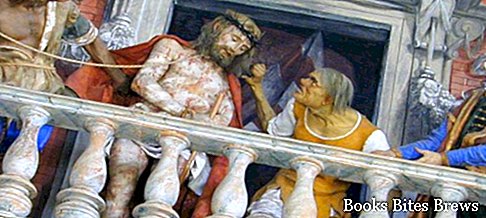What to see in Varallo, itinerary including the main monuments and places of interest, including Palazzo dei Musei, Church of Santa Maria delle Grazie and Sacro Monte.
Tourist information
Located in the province of Vercelli, on the slopes of Monte Tre Croci, where the Sanctuary of the Sacro Monte is located, Varallo played a role of primary importance during the Middle Ages, thanks to its particular strategic position inserted in the panorama of the communication routes in the area to that time.
Over the centuries it belonged to the counts of Blandrate, the Visconti, the Sforza and the Savoy, also from the thirteenth to the nineteenth century it was the capital of the Valsesian Community.
The Calderini Natural History Museum and the Pinacoteca are housed in the Palazzo dei Musei in via Maio.
In the Pinacoteca there are paintings by local artists, including Ferrari and Tanzio, painted between the fifteenth and nineteenth centuries, as well as frescoes found on the Sacro Monte and dating back to the period between the fifteenth and sixteenth centuries.
In Piazza Vittorio Emanuele II there is the thirteenth-century Church of San Gaudenzio, a single-nave building completely renovated at the beginning of the 1700s, located above a cliff and surrounded by a loggia.
Inside this cult building there is an interesting polyptych painted by Gaudenzio Ferrari between 1516 and 1520, depicting the Marriage of Santa Caterina.
Along the road leading to the Sacro Monte is the Church of Santa Maria delle Grazie, built in 1487 at the behest of Caimi, founder of the Sacro Monte.
The interior with a single nave houses one of the best works by Ferrari, consisting of the cycle of frescoes created in 1513 and concerning the Life and Passion of Jesus.
What see
The Sacro Monte was conceived by Father Bernardino Caimi from Milan, who began building it at the end of the fifteenth century.
At the beginning of the following century, the works were continued by Gaudenzio Ferrari, assisted by Galeazzo Alessi and Pellegrino Tibaldi.
Recommended readings- Alessandria (Piedmont): what to see in 1 day
- Langhe (Piedmont): what to see among castles, villages and vines
- Piedmont: Sunday day trips
- Oropa (Piedmont): what to see
- Cherasco (Piedmont): what to see
The most important construction of the complex is the Basilica of the Assumption, surrounded by 44 chapels called the "New Jerusalem", most of which concern individual episodes of the life of Jesus, while the rest are dedicated to San Francesco and San Carlo.
To get a realistic idea of the size of the complex, just think that there are 4000 figures in it, frescoed for the most part by Ferrari, Morazzone and Tanzio, as well as 600 sculptures created by Ferrari, Tabacchetti, D'Enrico and other artists.
The Basilica dell'Assunta, built between 1641 and 1728, has a single nave interior and a nineteenth century facade, in the dome stands out a magnificent depiction of the Assumption.
Nearby, about 2 km away, there is Madonna di Loreto, a remarkable building built in the Renaissance style in the early sixteenth century above an ancient chapel and completely restored around 1950.
In the three-sided portico you can admire frescoes from the sixteenth century, works by Zanetti, Cavallazzi and Ferrari, while inside there are masterpieces by Luini.




